Introduction: Gena Philibert-Ortega is a genealogist and author of the book “From the Family Kitchen.” In this blog post, Gena shows how “Help Wanted-Female” ads in historical newspapers can help you learn more about the employment opportunities that were available to your women ancestors—and learn about the places and eras they lived in.
What type of work did your female ancestor do? We often assume that our women ancestors were just “housewives” and didn’t work outside of the home. But for many women and girls, some sort of outside work was not an option—it was a financial necessity.
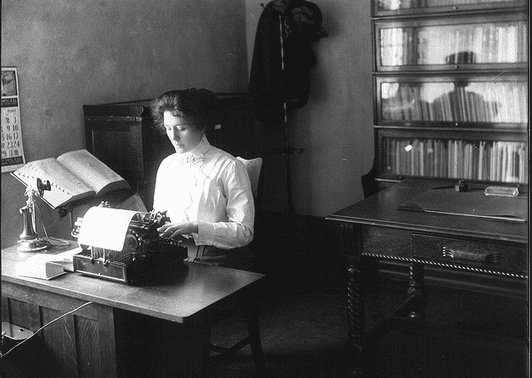
Early Newspaper Classifieds
So how did your female ancestor find employment? One option would have been the local newspaper’s Help Wanted advertisements. Prior to the 1964 Civil Rights Act and the Equal Employment Opportunity Commission, those classified advertisements were very specific. They didn’t just provide qualifications the employer was looking for; they sometimes specified race, gender, and even age. Classified ads often included the headings “Help Wanted-Female” and “Help Wanted-Male.” In the 1970s this segregation of ads was deemed illegal, and Help-Wanted ads evolved to the advertisements we are accustomed to reading today.
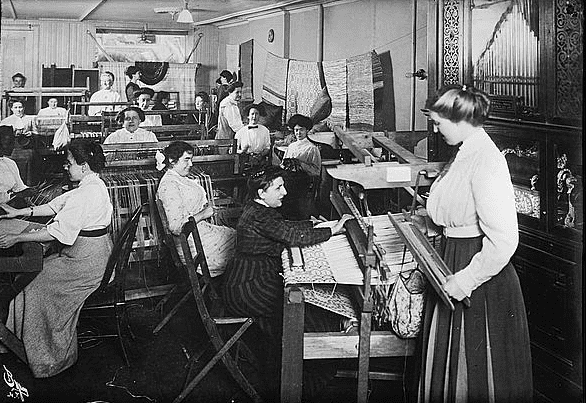
Help Wanted-Female Ads
Help Wanted-Female advertisements were not just employers looking for any qualified woman to apply for their job offerings. These ads were in some cases very specific about what type of female employee they wanted.
For example, while these 1885 Help Wanted ads from New York include jobs like cooking and cleaning—they also contain ads that request women of a certain religion or ethnic background. While an obvious sign of discrimination to us, these employment requirements were a common practice in the nineteenth century. In cases of families looking for household help, they may have added such requirements to their ads in hopes of finding someone that mirrored their own familial background, or spoke their language. No doubt, such requirements were sometimes added to Help Wanted ads due to stereotypical beliefs that a certain ethnic or racial group produced better housekeepers and cooks, or were less likely to steal.
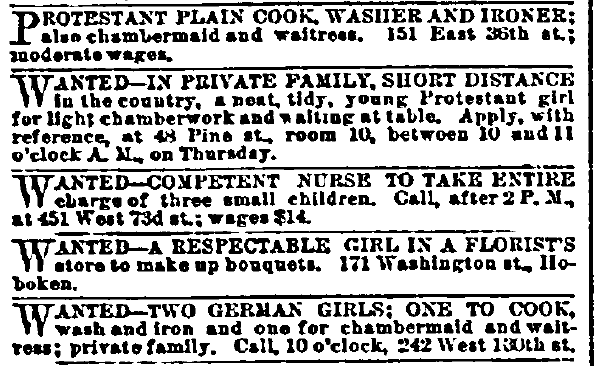
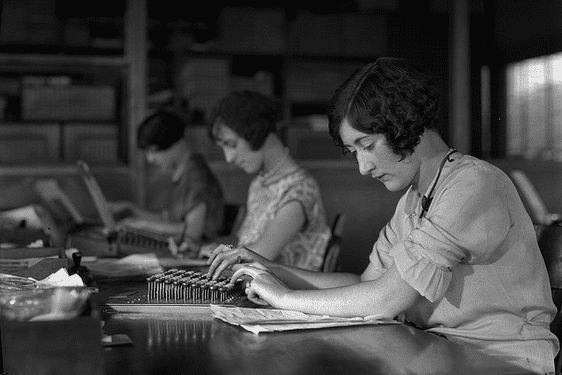
Help Wanted advertisements were not just segregated according to gender but also, in some cases, age or race. All of these advertisements from 1921specifically request a female: one wants an “Italian, Spanish or French” woman, one wants a “middle-aged” woman, one wants a “young” woman, and two want “white” women.
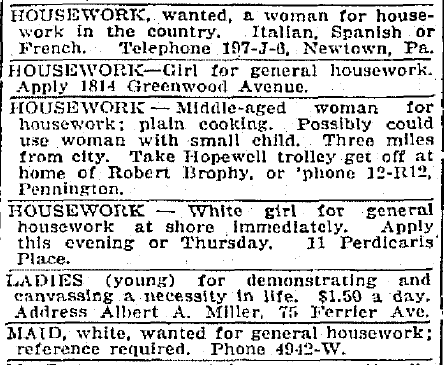
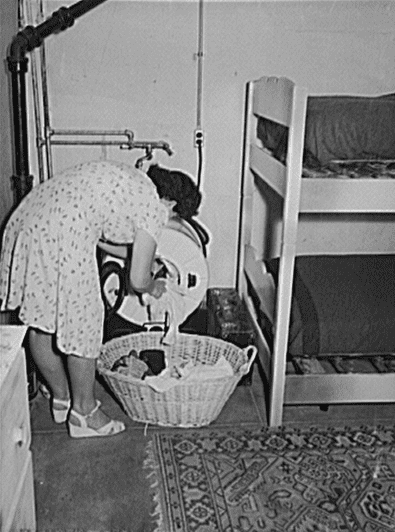
Social History in the Classifieds
One of the reasons I love classified advertisements is that they provide some social history information that can assist in learning more about the place and era of your ancestor. The 1885 ad above reflects how American jobs have changed over time, and provides a look at what types of employment women and girls could expect to engage in. In this particular Help Wanted column, one advertisement is searching for a “Girl who can mount hat birds…”
To understand this advertisement you need to know a little bit about late nineteenth century fashion history. Women during this time period were sporting hats decorated with bird feathers and entire stuffed birds. These practices resulted in the killing of large numbers of birds in the name of fashion. Later, the production of these hats fell out of favor after concentrated bird conservation efforts targeted women’s demand for the style.

In another Help Wanted example, from 1915, we find an advertisement looking for girls to work in a cigar factory. While today we associate cigar making with Cuba and the Caribbean, during the late nineteenth and early twentieth century, cigar making thrived in the United States and was seen as “women’s work” in cities such as Harrisburg, where this Help Wanted advertisement for the Harrisburg Cigar Company is from. This ad starts with announcing that they are looking for girls over 16 years of age to “strip” tobacco (remove the center stem in the tobacco leaf). Other jobs found in making cigars are also listed, including rollers, bunchmakers and packers.
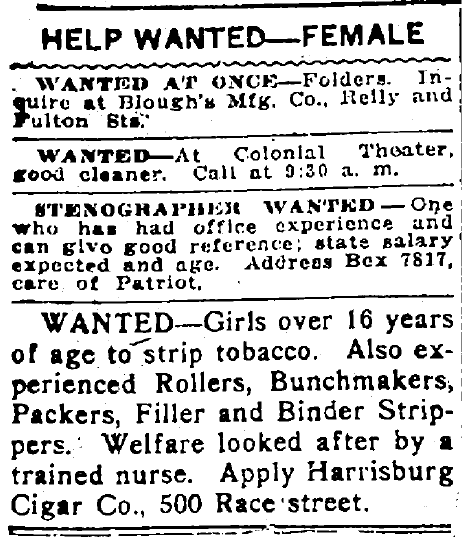
Situations Wanted
Women didn’t just find work through the Help Wanted ads; they may have also placed an ad in the Situations Wanted column to find a particular employment opportunity. This was a good tactic especially if the woman had a child and needed a live-in situation, was older, or did not speak English.
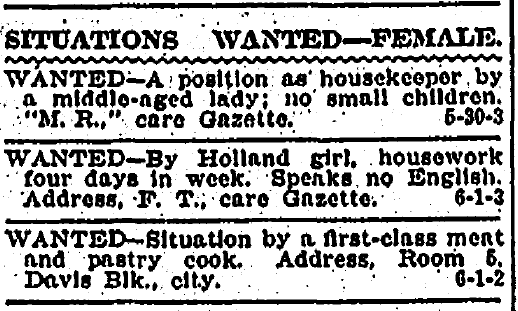
Did your female ancestor have a job? She just might have—and by reading the classifieds in the local newspaper of her hometown and era, you may get a sense for what types of employment were available to her.
Do you know what your early female ancestors did for a living? Please share the positions the women in your family occupied with us in the comments.
More Articles Related to Female Ancestors’ Occupations:
- Early Women Occupations, Jobs & Avocations
- Earlier Women of War: Nurses, Camp Followers & Red Cross Volunteers
- Anniversary of Susan B. Anthony’s Death: Women’s Rights Crusader
[bottom_post_ad]

My Mom worked as a sales clerk in a department store in the late 1940s, then was a housewife until 1985 when she worked as the information person at a local mall.
My Aunt did accounting work for a manufacturing company. She did the same work as a man at the desk next to her for lower pay. She was told he got paid more because he had a wife and children to support (she was single). When the government required equal pay, her salary was almost doubled to equal the man next to her.
Laura, those are important stories to record in your genealogy. It’s hard for those who are younger to understand that in some cases women gave up (or were forced to give up) their jobs when they married. That drastic pay raise of your aunt’s is a good example of what women experienced (and they too had families to support). Thank you for sharing your family history!–Gena